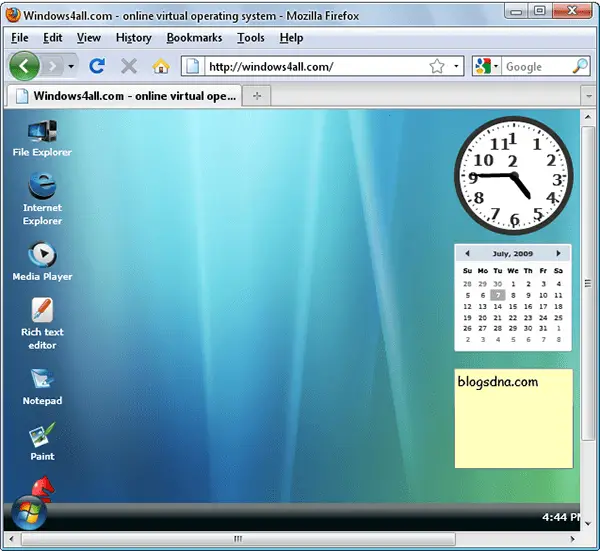For large systems, the operating system has even greater responsibilities and powers. It is like a traffic cop -- it makes sure that different programs and users running at the same time do not interfere with each other. The operating system is also responsible for security, ensuring that unauthorized users do not access the system.
Operating systems provide a software platform on top of which other programs, called application programs, can run. The application programs must be written to run on top of a particular operating system. Your choice of operating system, therefore, determines to a great extent the applications you can run. For PCs, the most popular operating systems are DOS, OS/2, and Windows, but others are available, such as Linux.
As a user, you normally interact with the operating system through a set of commands. For example, the DOS operating system contains commands such as COPY and RENAME for copying files and changing the names of files, respectively. The commands are accepted and executed by a part of the operating system called the command processor or command line interpreter. Graphical user interfaces allow you to enter commands by pointing and clicking at objects that appear on the screen.


On August 24, 1995, Microsoft released Windows 95, a new, and major, consumer version that made further changes to the user interface, and also used preemptive multitasking. Windows 95 was designed to replace not only Windows 3.1, but also Windows for Workgroups, and MS-DOS. It was also the first Windows operating system to use Plug and Play capabilities. The changes Windows 95 brought to the desktop were revolutionary, as opposed to evolutionary, such as those in Windows 98 and Windows Me. Mainstream support for Windows 95 ended on December 31, 2000 and extended support for Windows 95 ended on December 31, 2001.
The next in the consumer line was Microsoft Windows 98 released on June 25, 1998. It was followed with the release of Windows 98 Second Edition (Windows 98 SE) in 1999. Mainstream support for Windows 98 ended on June 30, 2002 and extended support for Windows 98 ended on July 11, 2006.
As part of its "professional" line, Microsoft released Windows 2000 in February 2000. During 2004 part of the Source Code for Windows 2000 was leaked onto the Internet. This was bad for Microsoft as the same kernel used in Windows 2000 was used in Windows XP. The consumer version following Windows 98 was Windows Me (Windows Millennium Edition). Released in September 2000, Windows Me implemented a number of new technologies for Microsoft: most notably publicized was "Universal Plug and Play". Windows Me was heavily criticized due to slowness, freezes and hardware problems.
In October 2001, Microsoft released Windows XP, a version built on the Windows NT kernel that also retained the consumer-oriented usability of Windows 95 and its successors. This new version was widely praised in computer magazines. It shipped in two distinct editions, "Home" and "Professional", the former lacking many of the superior security and networking features of the Professional edition. Additionally, the first "Media Center" edition was released in 2002, with an emphasis on support for DVD and TV functionality including program recording and a remote control. Mainstream support for Windows XP ended on April 14, 2009. Extended support will continue until April 8, 2014.
In April 2003, Windows Server 2003 was introduced, replacing the Windows 2000 line of server products with a number of new features and a strong focus on security; this was followed in December 2005 by Windows Server 2003 R2.
On January 30, 2007, Microsoft released Windows Vista. It contains a number of new features, from a redesigned shell and user interface to significant technical changes, with a particular focus on security features. It is available in a number of different editions, and has been subject to some criticism.
On October 22, 2009, Microsoft released Windows 7. Unlike its predecessor, Windows Vista, which introduced a large number of new features, Windows 7 was intended to be a more focused, incremental upgrade to the Windows line, with the goal of being compatible with applications and hardware which Windows Vista was not at the time. Windows 7 has multi-touch support, a redesigned Windows shell with a new taskbar, referred to as the Superbar, a home networking system called HomeGroup, and performance improvements.

No comments:
Post a Comment